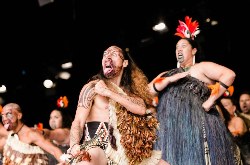Ara Engineering Student Takes Flight (And Makes It Better)
Joshua Bensberg was surprised to be named both the winner for the ‘Best Project - Mechanical Engineering’ prize and ‘Industry Choice’ for his "TEKMIK Coaxial Rotor Configuration" project at the finale of Ara’s 2020 Engineering Showcase last week.
Joshua, who will be completing his Bachelor of Engineering Technology this year, impressed the judges with his project for TEKMIK of Woolston, an exploration of methods to improve the performance efficiency of aircraft via rotor-craft blade designs.
He says that the problem is a tough one, "Because there's currently no definitive design for rotors. It's kind of a matter of what you're actually aiming to achieve. If you want a certain diameter of the rotor blades, you will need to have certain design characteristics within its length to perform better. If you prioritize one criteria, you might have to sacrifice another."
Using a drone model of the company’s ‘AirScooter’ vehicle, Joshua applied his knowledge of Blade Element Theory (BET) and Blade Element Momentum Theory (BEMT) to create a universal design tool for TEKMIK to utilize when considering optimal blade parameters for their vehicles, taking into account their planned use and technical specifications.
Joshua explains "The aim of my client is to create UAVs for multiple applications, such as for surveillance, the delivery of light items, agricultural purposes and so on.
I created a design tool in Excel spreadsheet, so what my client will be able to now do is input their desired specifications - weight, diameter, speed, the engine; and the tool will be able to output a blade design, and then we can compare all the different designs, to decide which would be best."
One of the aerodynamic issues of rotor blade design involves achieving improved distribution of air inflow and thrust along the length of the blade, ameliorating the common problem of speed concentration at the furthest end of the blades, which causes ‘tip loss’, a condition during which thrust is typically lost due to the creation of air vortices at blade tips.
The practical experiments that Joshua undertook revealed that incorporating a linear twist in the blade profile of an asymmetric airfoil noticeably increased the production of thrust.
Josh says that while he "had no clue what the outcome of my study would be when first came to Ara", he now hopes to continue working with TEKMIK. "That would make me happy. I'll be delivering my findings to them, and I'll definitely be answering a lot of questions for everyone so that they can understand it and, you never know - I could be hired by them!"
In the years to come, Josh sees his interests remaining in design. "I'm particularly interested in the design process; designing components and designing machines. The overall idea of 'what can be made?’ lets the imagination flow!"
Ara Senior Lecturer and project supervisor Graeme Harris commented "This project displayed a high level of numerical analysis, modelling, and practical testing to verify the data. Josh hit the ground running, came up with his own ideas and ran a good project. Josh worked well with the industry client and showed a good understanding of an unfamiliar area of engineering. His client TEKMIK was very happy with the result and plans to use his work and calculations to further develop their unique helicopter."


 NZEI Te Riu Roa: Mandated Single Approach To Reading Will Not Work
NZEI Te Riu Roa: Mandated Single Approach To Reading Will Not Work The Conversation: Could The School Phone Ban Work?
The Conversation: Could The School Phone Ban Work? Public Health Communication Centre: To Avoid A Measles Epidemic, Aotearoa Must Close The ‘Immunity Gap’
Public Health Communication Centre: To Avoid A Measles Epidemic, Aotearoa Must Close The ‘Immunity Gap’ Heritage New Zealand: Kid-friendly Archaeology Resource Kit Launched As Part Of Archaeology Week
Heritage New Zealand: Kid-friendly Archaeology Resource Kit Launched As Part Of Archaeology Week Tatai Aho Rau Core Education: Cyber Skills Programme For Tamariki Recognised At Māori Language Awards
Tatai Aho Rau Core Education: Cyber Skills Programme For Tamariki Recognised At Māori Language Awards Waitaha Kapa Haka: Waitaha-South Island Kapa Haka Celebrates 60th Anniversary
Waitaha Kapa Haka: Waitaha-South Island Kapa Haka Celebrates 60th Anniversary